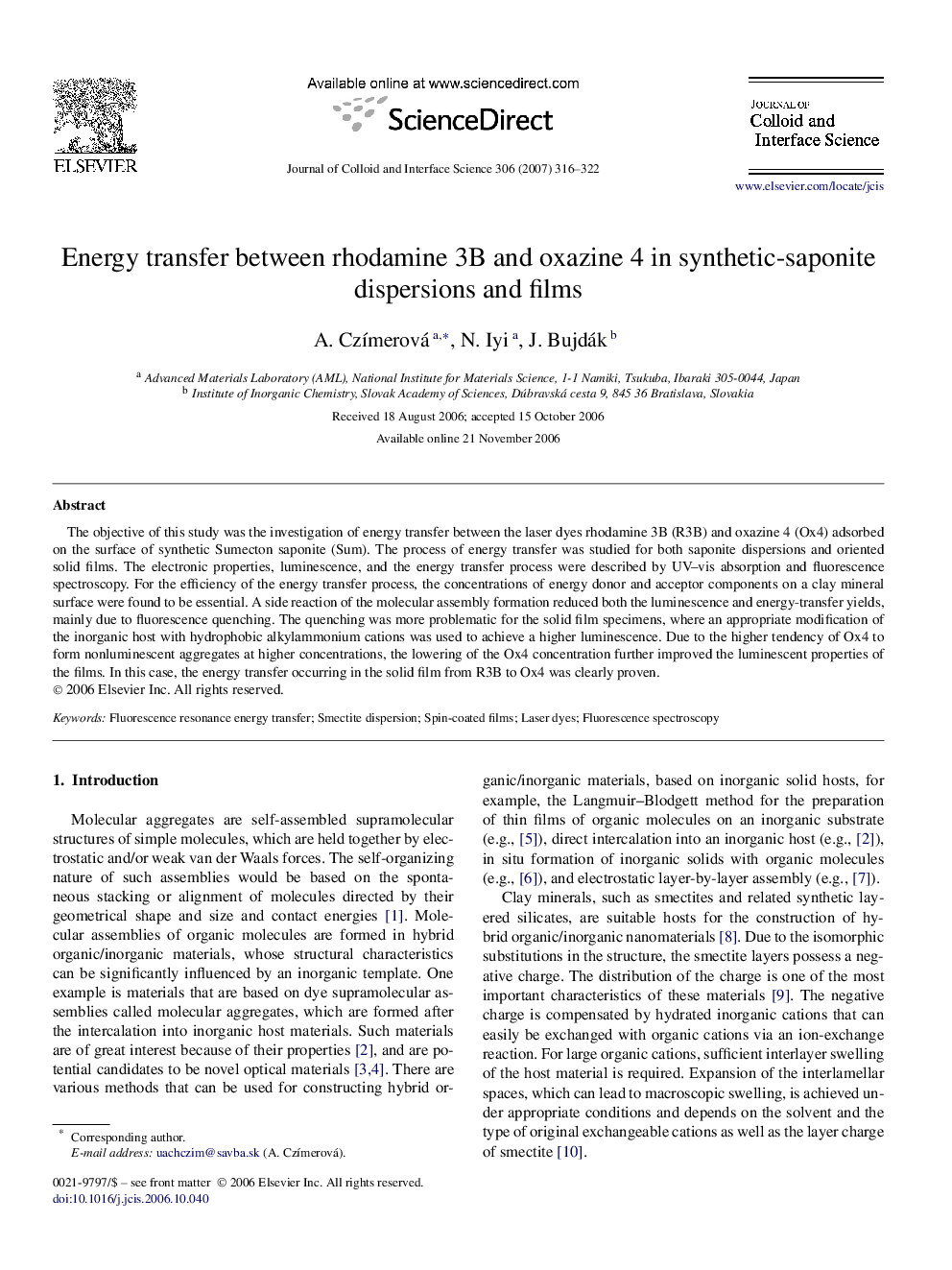| Article ID | Journal | Published Year | Pages | File Type |
|---|---|---|---|---|
| 612763 | Journal of Colloid and Interface Science | 2007 | 7 Pages |
The objective of this study was the investigation of energy transfer between the laser dyes rhodamine 3B (R3B) and oxazine 4 (Ox4) adsorbed on the surface of synthetic Sumecton saponite (Sum). The process of energy transfer was studied for both saponite dispersions and oriented solid films. The electronic properties, luminescence, and the energy transfer process were described by UV–vis absorption and fluorescence spectroscopy. For the efficiency of the energy transfer process, the concentrations of energy donor and acceptor components on a clay mineral surface were found to be essential. A side reaction of the molecular assembly formation reduced both the luminescence and energy-transfer yields, mainly due to fluorescence quenching. The quenching was more problematic for the solid film specimens, where an appropriate modification of the inorganic host with hydrophobic alkylammonium cations was used to achieve a higher luminescence. Due to the higher tendency of Ox4 to form nonluminescent aggregates at higher concentrations, the lowering of the Ox4 concentration further improved the luminescent properties of the films. In this case, the energy transfer occurring in the solid film from R3B to Ox4 was clearly proven.
Graphical abstractEnergy transfer from R3B to Ox4 adsorbed on the clay mineral surface was easily achieved in smectite dispersions. Due to the quenching of luminescence the efficiency of energy transfer in the films did not achieve a significant amount.Figure optionsDownload full-size imageDownload as PowerPoint slide
